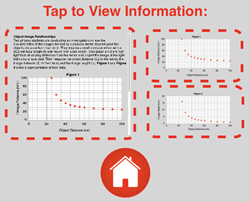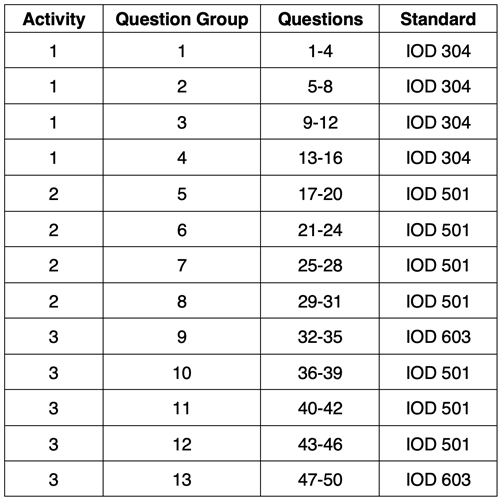About the Science Reasoning Center
 Like all our Science Reasoning Center activities, the completion of the Object-Image Relations activity requires that a student use provided information about a phenomenon, experiment, or data presentation to answer questions. This information is accessible by tapping on the small thumbnails found on the bottom right of every question. However, it may be considerably easier to have a printed copy of this information or to display the information in a separate browser window. You can access this information from this page.
Like all our Science Reasoning Center activities, the completion of the Object-Image Relations activity requires that a student use provided information about a phenomenon, experiment, or data presentation to answer questions. This information is accessible by tapping on the small thumbnails found on the bottom right of every question. However, it may be considerably easier to have a printed copy of this information or to display the information in a separate browser window. You can access this information from this page. The Standards
The Object-Image Relations activity describes an experiment in which students investigate the effect of the distance an object is from the mirror upon the height and location of the corresponding image. Data is presented in the form of two graphs. Questions target a student's ability to identify the effect of one variable upon another variable, to select values and to compare values on a graph, to draw conclusions that are consistent with a data presentation (or two), to combine data from two graphs in order to identify an accurate conclusion, and to interpolate using values on a graph.
Success with the activity requires some degree of proficiency with respect to ...
- Developing and Using Models (Science and Engineering Practice 2.6)
Develop and/or use a model (including mathematical and computational) to generate data to support explanations, predict phenomena, analyze systems, and/or solve problems. - Planning and Carrying Out Investigations (Science and Engineering Practice 3.5)
Make directional hypotheses that specify what happens to a dependent variable when an independent variable is manipulated. - Analyzing and Interpreting Data (Science and Engineering Practice 4.6)
Analyze data to identify design features or characteristics of the components of a proposed process or system to optimize it relative to criteria for success. - Using Mathematics and Computational Thinking (Science and Engineering Practice 5.3)
Use mathematical, computational, and/or algorithmic representations of phenomena or design solutions to describe and/or support claims and/or explanations. - Constructing Explanations and Designing Solutions (Science and Engineering Practice 6.1)
Make a quantitative and/or qualitative claim regarding the relationship between dependent and independent variables. - Patterns (Crosscutting Concept 1.5)
Mathematical representations are needed to identify some patterns. - Scale, Proportion, and Quantity (Crosscutting Concept 3.2)
Algebraic thinking is used to examine scientific data and predict the effect of a change in one variable on another (e.g., linear growth vs. exponential growth.
While the Object-Image Relations activity addresses the five NextGen Science and Engineering Practices and the two Crosscutting Concepts above, the activity drew its greatest inspiration from ACT's College Readiness Standards for Science Reasoning. The activity consists of 50 questions organized into 13 Question Groups that are spread across the three difficulty levels. Only one strand (Interpretation of Data - IOD) of the College Readiness Standards are addressed in this activity. The code given for the standard includes three letters to indicate the strand and three numbers to indicate the specific standard within that strand. Higher numbers are indicative of more complex science reasoning skills. The relationship between the questions and the standards is as follows:

Complementary and Similar Resources
The following resources at The Physics Classroom website complement the Object-Image Relations Reasoning Activity. Teachers may find them useful for supporting students and/or as components of lesson plans and unit plans.
Physics Classroom Tutorial, Reflection and the Ray Model of Light Chapter: Lesson 3
Physics Video Tutorial, Reflection and Mirrors: Concave Mirror Images
Physics Interactives, Reflection and Mirrors: Optics Bench Simulation
Physics Interactives, Reflection and Mirrors: Name That Image
Physics Interactives, Reflection and Mirrors: Concave Mirror Image Formation
Concept Builders, Reflection and Refraction: The L•O•S•T Art of Image Description
Minds On Physics, Reflection and Mirrors Module, Mission RM6: Concave Mirror Images
The Calculator Pad, Reflection and Mirrors, Problem Sets RM4 - RM8
Recommended: Print Passage, Tables, and Graphs
Also see: